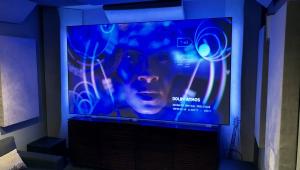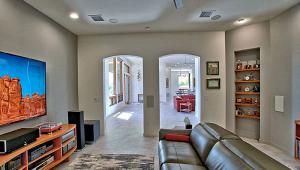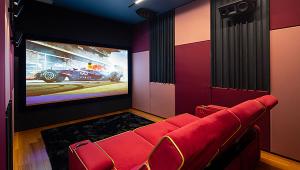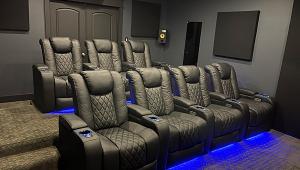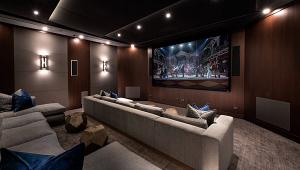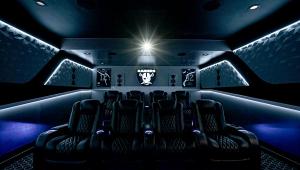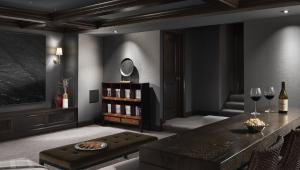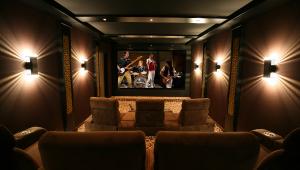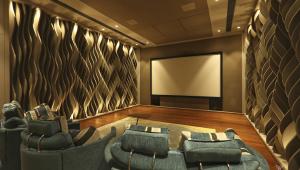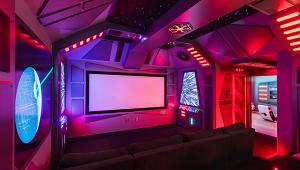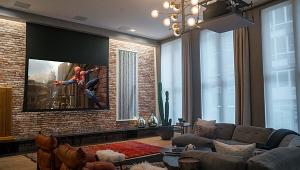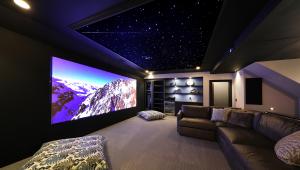Do I have to remove the soundbar? Only want surround for cd player and vcr.
Money for Nothing and Your Tweaks for Free Page 4
Try to keep the height of the center channel’s tweeter within 12 inches above or below the tweeters in the left and right front speakers. This keeps sound effects from audibly moving up and down as they pan across the front soundstage.
If your center channel is sitting on a shelf or on top of your TV, move it forward so that it sticks out an inch or so off the edge of whatever it’s sitting on. This can make a big difference in the center channel’s intelligibility and musicality. However, don’t do this if there’s a possibility of the speaker falling off its perch. Use common sense here. We will not be responsible for damages.
Cost: Free
8. Up Yours
If you want to elevate your surround speakers but you don’t have or want to buy stands, the cheapest way to elevate them is to place them on the bookshelves you already have in the room. (Yes, that sound you hear in the background is Mark and Tom groaning in pain.) But if your only other option is to set them on the floor, here are Tom’s suggestions:
If you have to put your bookshelf speakers on a bookshelf, try filling the area around them with densely packed books to minimize nearby cavities.
It’s OK to put sealed-box speakers on a closed-in shelf, but you shouldn’t do this with ported speakers—unless the port is on the front of the cabinet. If the port can’t breathe, the cabinet tuning will be thrown off, and the speaker’s bass response will be degraded.
Don’t position a bookshelf speaker side-ways. Always place it so that the woofer and tweeter are aligned vertically, not horizontally. (That is, unless it’s a center-channel speaker that’s designed to be used horizontally.)
No bookshelves? Many surround speakers have built-in keyhole mounts that only require a screw to hold them up. Use a secure screw to tightly hold the speaker against the wall rather than a nail or a picture-hanging hook so they don’t rattle themselves off the wall and onto the floor—or someone’s head. You can’t angle a speaker mounted on a keyhole bracket down into the listening area, but you can spend around $25 and up for a pair of wall-mount brackets with that capability.
Cost: $50-plus
9. Going Toe to Toe and Raking in the Rewards
Toe-in is the angle at which the speakers point toward the listener. You might think that each speaker should be pointed like a laser beam at your ears. While that’s true for center-channel speakers, many front-channel speakers sound better angled slightly away from the center. This is because a loudspeaker’s off-axis frequency response is often smoother than that coming straight at you. The amount of toe-in also affects the soundstage’s width and depth. How much of an angle depends on the speaker, and the best way to tell is by sitting down, listening, adjusting, and repeating.
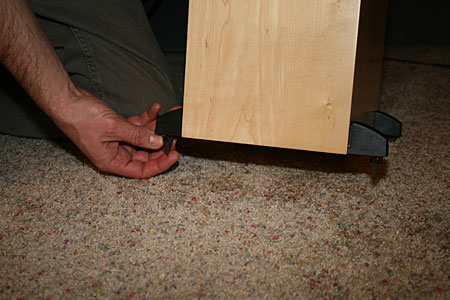
After toe-in, there’s the more delicate adjustment of rake angle, which is the angle the speaker leans forward or backward. Rake affects the smoothness of the direct response at the listening position as well as the perceived height of the soundfield. Small changes can make a surprising difference, depending on the speaker. Many wall-mount brackets allow for rake adjustment. If you’re using spikes on your speakers, it’s easy to change the rake angle by adjusting the height of the front spikes. If you don’t use spikes, you can try something that’s solid enough to support the speaker. In the interest of safety, be conscious of the center of balance.
Cost: Free
10. Crawling for Bass
Because a subwoofer’s bass output varies from place to place throughout the room, you could very well be sitting in a spot where the bass is less than its best. But keep your hands off that bass-control knob! With a little detective work and a mild aerobic workout on your hands and knees, you can remedy that situation. Here’s the (literally) down-and-dirty method of finding the best location for your sub:
PLACING YOUR SUB
Ideally, you’d slam the subwoofer down in the place where the bass sounds best, but that location may not be practical. But there will be other spots in the room, so you should continue the process until you’ve found the best acceptable location.
Tom rightly points out that one limitation of this method is that it doesn’t necessarily tell you the location where your sub will best blend with the main speakers. But it’s still a useful shortcut. He suggests that you go one step further. After you find several potential sub locations, spend some time listening to the system with the subwoofer at each location. Just remember to readjust the subwoofer level and phase each time you move it.
Tom says another drawback to this crawling-for-bass method is that the subwoofer will definitely be more comfortable during the process than you will.
Cost: Free (plus dirty knees)
11. On the Level
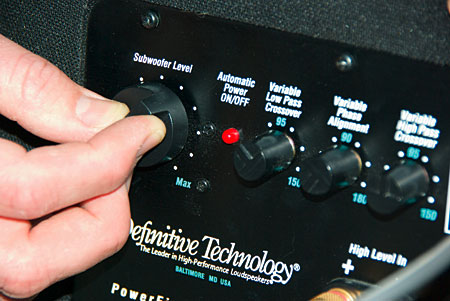
Setting the correct subwoofer crossover point is a bit trickier. With full-range towers, Mark prefers setting the speaker size to large. This method assumes that your main speakers and associated amplifiers are up to the task of reproducing low bass at high volumes without undue distortion. From there it’s a delicate balancing act of adjusting the crossover point and output level in order to blend the subwoofer/speaker combo into one coherent unit. On the other hand, Tom likes to drive all the speakers as small—which usually crosses over at 80 hertz, depending on the manufacturer’s recom-mendations and listening tests—since a set-ting of large increases the strain on both the speakers and the amplifier channels driving them, especially during heavy bass passages.
Cost: Free
- Log in or register to post comments


In the ever-evolving landscape of cryptocurrencies, I stumbled upon a website that simplifies the process of trading digital assets. This platform buy crypto using credit card offers a sophisticated interface that ensures a secure and efficient experience for both buyers and sellers. Regardless of your level of expertise, this website provides an invaluable resource for those interested in participating in the dynamic crypto market.

"Money for Nothing and Your Tweaks for Free" on page 3 is a revelation for me. Uncertain about investment avenues, this article addresses my concerns. Additionally, the link explaining how to turn Bitcoin into USD https://icoholder.com/blog/how-to-turn-bitcoin-into-usd/ is a timely resource, providing clarity on cryptocurrency. Now, armed with practical insights, I'm better equipped to make informed financial decisions and explore profitable opportunities.
